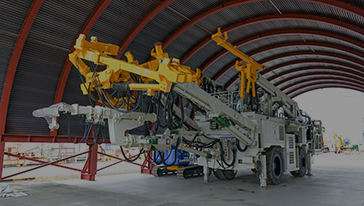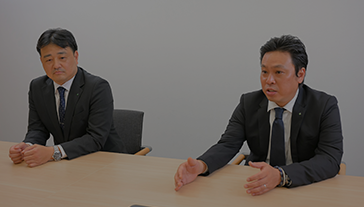
Tunnel Construction Professionals
Construction Robotics Division
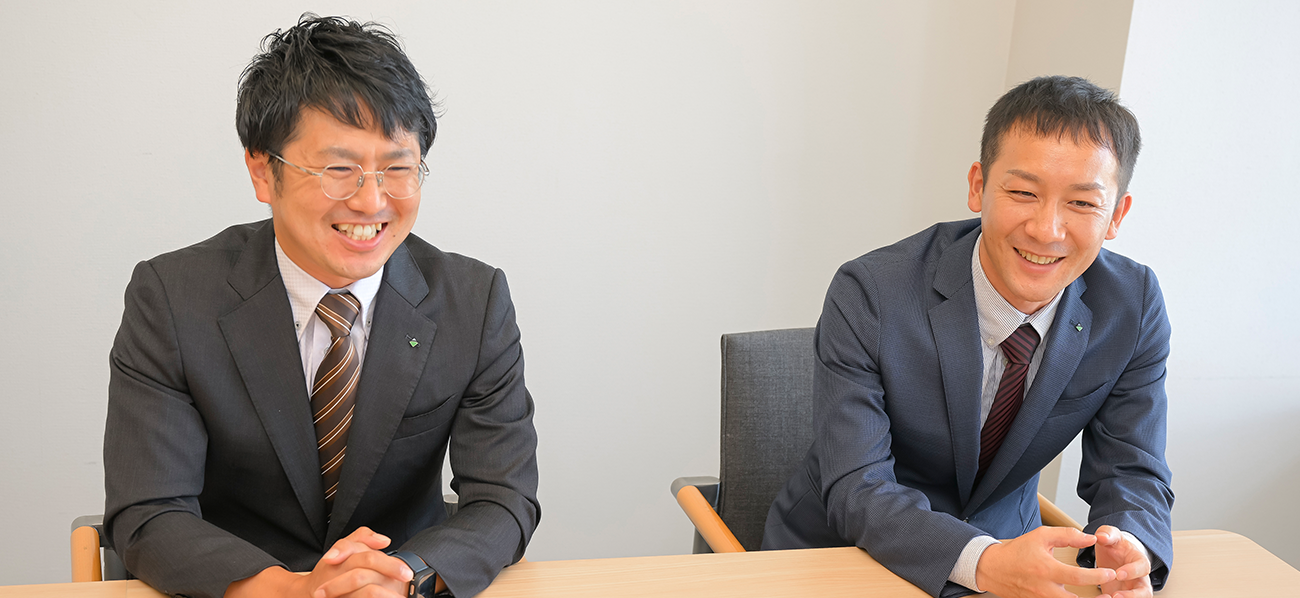
Deputy Manager, Construction Support Section,
Construction Engineering Department 1,
Construction Robotics DivisionShingo YAMAMOTO
Construction Manager of Electromechanics,
Tunnel Construction OfficeYusuke HINOSHITA
“Combining wisdom and insight to tackle issues”
As specialists in mechanical and electrical engineering
YAMAMOTO:
As a college student, I studied mechanical engineering. At work, I get to know different machines at every construction site. With new machines, I need to learn the functions and features to ensure that workers understand the various pieces of information on the machine. Teaching so that everyone can understand is an important task. When unexpected problems arise at the sites, we the electromechanical staff should deal with it promptly, calmly sorting out the situation and finding a solution. We then give feedback to the entire site workers to prevent similar situations and develop more countermeasures. On a daily basis, I become more adept at troubleshooting and flexible in directing on-site operations. It gives me a sense of accomplishment when I succeed in leading this whole process.
HINOSHITA:
I was also a mechanical engineering major. I joined Obayashi because I wanted get involved in building large structures such as roads and buildings from scratch, actually seeing and touching the machines, not only doing design and quality control. Now, I work on construction planning and management, but I also go to the sites to check the machines, identify the causes of malfunctions and defects, and fix them. I am achieving what I wanted to do before I joined the company. My work also involves planning the installment of electricity and the combination of machines for the sites. Civil engineers rely on me fully in the areas of machinery and electricity, which gives me a renewed sense of determination.
YAMAMOTO:
Each electromechanical staff has different areas of expertise. We hold numerous meetings with various people to develop technology and machines to meet the needs of the construction sites. A breakthrough can be found by gathering the wisdom of everyone involved.
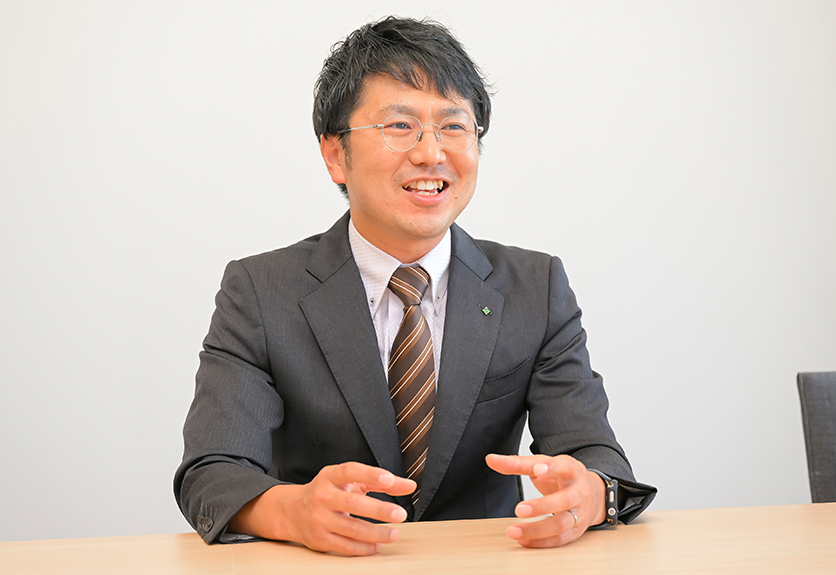
Shingo YAMAMOTO, Deputy Manager,
Construction Support Section, Construction Engineering Department 1,
Construction Robotics Division
HINOSHITA:
Since we live in an era that demands a wide range of knowledge in robotics, these days in Obayashi there are some electromechanical staff who specialize in other fields. The number of female employees is also increasing. Some members are engaged in mechanical and electrical-related research at the Technology Research Institute in Kiyose, Tokyo. Our human resources are increasingly diverse.
Information sharing across boundaries
HINOSHITA:
Electromechanical staff working at construction sites are sometimes assigned there alone, even without many years of experience. But Obayashi’s Construction Robotics Division and robotics center back up constructions, which is reassuring. This is my 14th year at this company, and I have worked mostly at tunnel sites and in construction support. When you are unsure about a new construction method or have trouble dealing with unexpected problems, you can always consult senior staff with experience of a number of tunnel sites at Construction Robotics Division and robotics center and obtain appropriate advice based on similar past experience and achievements. They at times go so far as to provide careful documentation and explanation until you are satisfied.
YAMAMOTO:
When I took a new post at the construction sites with very little experience, I didn’t really know where to ask when I had a technical or minor question. Now the Construction Robotics Division is taking initiative to eliminate isolation and worries at the field. Using information sharing tools such as Teams, they provide real-time support to electromechanical staff assigned to the field, utilizing screen sharing and video call functions. Even on sites where only one young electromechanical staff is assigned, because they can have meetings together while looking at drawings and photographs, they can provide accurate advice and one-on-one guidance.
HINOSHITA:
I really appreciate the efforts to share information widely. Chat and other exchanges are generated on a daily basis, such as “We have solved a problem at our site by this means” or “We have a problem, can anyone lend us their wisdom?”. About a decade ago, I think West Japan Robotics Center and the East Japan Robotics Center didn’t really know what the other is up to, but now I feel that they work together more closely.
YAMAMOTO:
I want my junior staff to finish working at construction sites feeling that they have gained valuable experience because then, they will be able to utilize the knowledge effectively in future construction support or technical development.
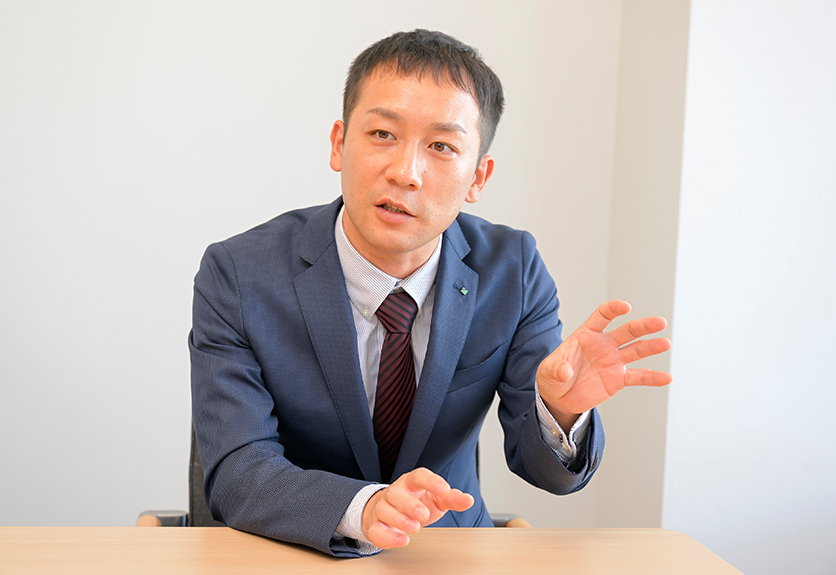
Yusuke HINOSHITA, Construction Manager of Electromechanics,
Tunnel Construction Office
Facing the challenges of tunneling
YAMAMOTO:
Since tunneling involves dealing with the tunnel face in front of you, a single misjudgment can lead to serious injury and loss of human life. The workers on site are important colleagues who work together on construction projects. The mission of the Construction Robotics Division and robotics center is to provide safe environment through technology for them.
Currently, I am working on the development of remote and automated technology. Remote-controlled robots will now take over the work performed by humans in hazardous environments. Automation technologies that make full use of ICT and IoT have already become prevalent on site. Simple tasks used to be carried out by people are now done by robots.
The Construction Robotics Division and robotics center have senior staff with a lot of field experience and highly specialized engineers. We will continue to develop new technologies, achieve safety through remote and automated operations and on-site productivity improvement through robotics and create new norms of construction sites.
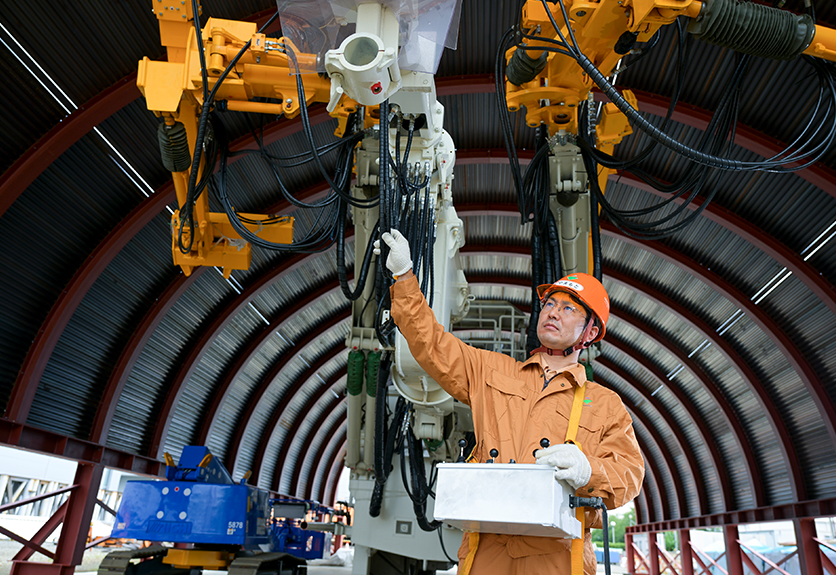
At the Robotics Center
HINOSHITA:
Before I was assigned to my current position, I worked at the West Japan Robotics Center for about seven years, mainly involved in on-site construction planning and management, and support for bidding of construction projects. I was also involved in the developments of technologies to improve productivity and save labour and manpower in tunnel construction. The experience at the center was valuable because on site, you cannot experience technical development. Technical development takes time ― it can’t possibly be achieved overnight. I remember the time when a robot which worked fine during the experiment in factory did not work as programmed on site and we had to repeat trial and error while discussing the problem with everyone involved. Even after my transfer from the center, various technical developments have continued. For electromechanical engineers, the span of transfer is often short and it is rare for them to be involved in the development of a single technology until the very end, but the successors carry on the ideas of the predecessors to complete it.
Currently, I am the on-site construction manager of a long tunnel in Nagano Prefecture. In preparations for the construction, I am making plans for temporary facilities and machinery and running the necessary electricity. This is a large-scale, challenging project attracting nationwide attention. There is a lot of pressure, but I am determined to complete the project to the end.

